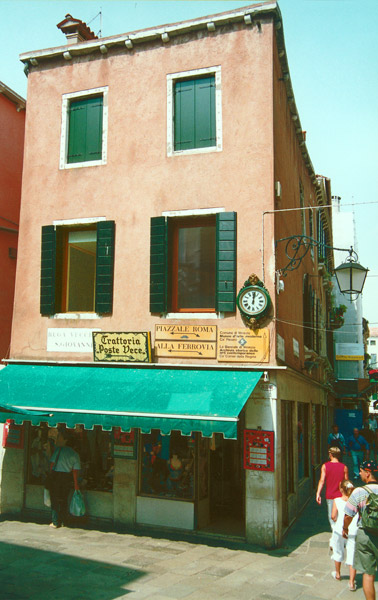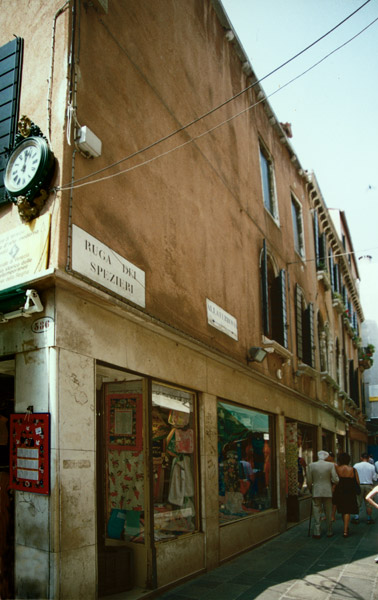|
Holocene Passage
Aligned with a
view of the Rialto bridge, the installation is an enclosed "passage" between
two open windows of the gallery space. It is a transparent,
glass and
wood-framed structure lined with a field of moss collected
from the forests of Northern Italy. The properties of the
moss may
be altered by daily climate change and other natural phenomena
through the open windows at either end -- on dry days the moss
is a dormant grayish color, on moist days, to the extent that
weather can reach within the structure, a vibrant green. Additionally,
other forms of nature such as birds and insects may interact
within the enclosed space. Holocene Passage, forms
a channel of nature through the gallery space, much like the
Venetian canals and their sinuous interaction with the architecture
of the city.
Holocene
Passage investigates
two resonate themes of my work, one that relates architecture
and human activity to larger natural systems and geologic
time, the
|
second,
in a similar way to the earlier landscape furnaces and other
environmental works, where forces of nature are made visible
in a confined environment and a dialog ensues between nature,
the structure and its contents. Conceptually, the moss is
seen as a bridge in time between the present and an ancient
geologic
past. Like the moss contained in Holocene
Terrace, 1999,
installed in the Lance Fung Gallery, New York, it is used
as a reference to the primal conditions of sedimentary deposition,
the material that later became the stone used for construction
of the city’s architecture. In this context, the city
is seen as a geologic formation, formed by parallel human
activities: quarrying as erosion, transport as flow and construction
as
sedimentation. Conceptually as well as physically, Holocene
Passage is intended to be a confluence of time, site,
metaphor and process.
John Roloff, 2002
|

